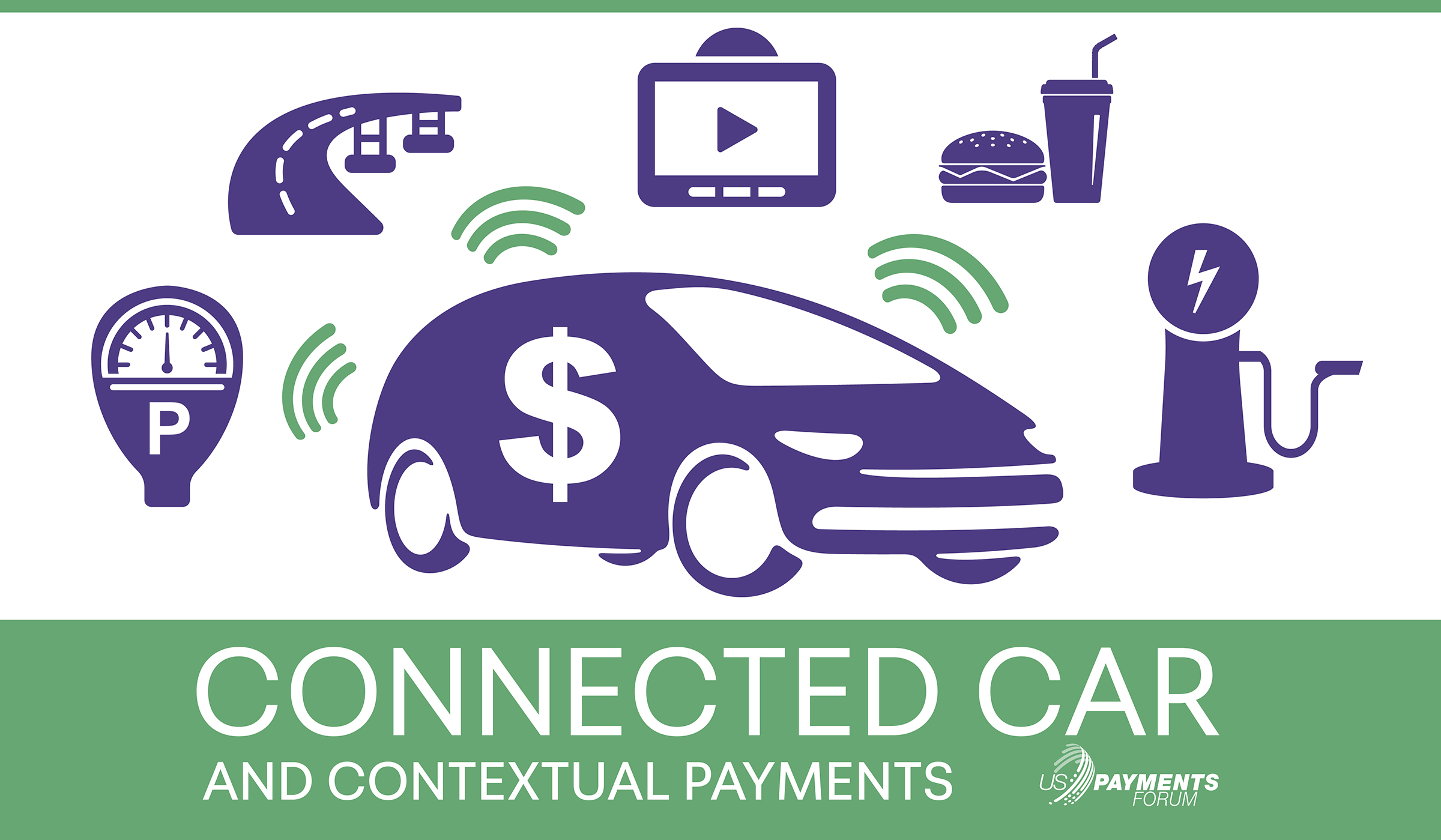Connected Car and Contextual Payments
Publication Date: May 2024
Executive Summary
The convergence of automotive technology and digital payments has given rise to a transformative concept: the connected car and contextual payments ecosystem. This U.S. Payments Forum white paper delves into the intersection of these two domains, exploring the potential, challenges, and considerations for implementations.
In recent years, the automotive industry has witnessed a rapid evolution driven by connectivity, data analytics, and automation. The connected car, once a concept limited to infotainment, has evolved into a hub of sophisticated sensors, telematics, and communication channels. This evolution opens up avenues for safer, more efficient payments experiences, vehicle-to-vehicle communication, and integration with smart city infrastructure.
At the same time, the world of payments has been undergoing a digital transformation. Mobile wallets, touchless payments, and seamless online transactions have become the norm. Contextual payments, a novel concept, leverage real-time data and situational awareness to facilitate frictionless transactions. When applied to connected cars, contextual payments enable many use cases, from in-car purchases (e.g., fuel, tolls, parking) to personalized services (e.g., entertainment subscriptions, food delivery) that enhance the driving experience.
However, this convergence also presents challenges that must be addressed. Security and privacy are paramount, as the exchange of sensitive financial information within a vehicle’s digital ecosystem raises concerns about data breaches and unauthorized access. Interoperability standards are crucial to ensure seamless collaboration among automakers, payment providers, and technology developers.
The benefits, nonetheless, are substantial. For consumers, the connected car and contextual payments integration offers convenience, time savings, and personalized experiences. For businesses, new revenue streams, data-driven insights, and opportunities for customer engagement are possible.
This white paper provides an analysis of the synergy between the connected car and contextual payments. It explores real-world examples and equips stakeholders across industries with the knowledge needed to navigate this evolving landscape successfully. At publication, new use cases are emerging into the marketplace that are not covered by this white paper.
Please note: The information and materials available on this web page (“Information”) is provided solely for convenience and does not constitute legal or technical advice. All representations or warranties, express or implied, are expressly disclaimed, including without limitation, implied warranties of merchantability or fitness for a particular purpose and all warranties regarding accuracy, completeness, adequacy, results, title and non-infringement. All Information is limited to the scenarios, stakeholders and other matters specified, and should be considered in light of applicable laws, regulations, industry rules and requirements, facts, circumstances and other relevant factors. None of the Information should be interpreted or construed to require or promote the establishment of any solution, practice, configuration, rule, requirement or specification inconsistent with applicable legal requirements, any of which requirements may change over time. The U.S. Payments Forum assumes no responsibility to support, maintain or update the Information, regardless of any such change. Use of or reliance on the Information is at the user’s sole risk, and users are strongly encouraged to consult with their respective payment networks, acquirers, processors, vendors and appropriately qualified technical and legal experts prior to all implementation decisions.

